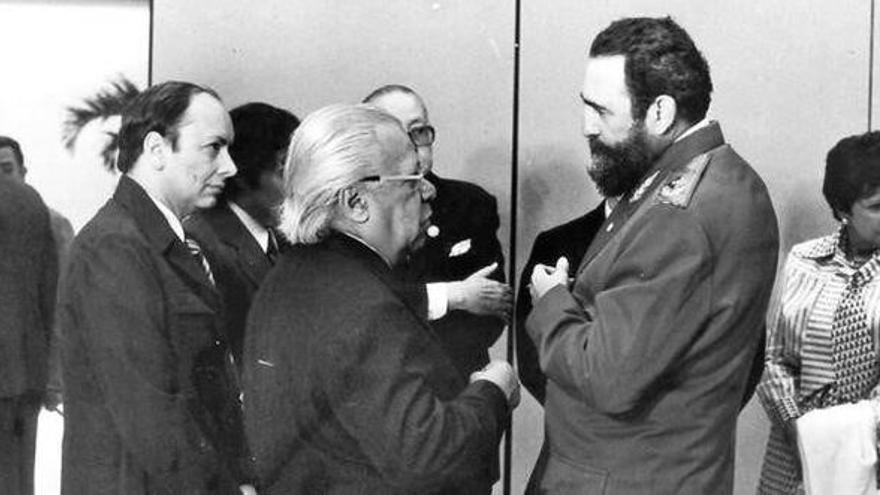
![]() 14ymedio, Xavier Carbonell, Salamanca, January 6, 2024 — “Down with the apolitical writers! Down with the supermen of literature!” “Their original sin: they are not authentically revolutionary.” “Outside the Revolution, no rights.”
14ymedio, Xavier Carbonell, Salamanca, January 6, 2024 — “Down with the apolitical writers! Down with the supermen of literature!” “Their original sin: they are not authentically revolutionary.” “Outside the Revolution, no rights.”
The law of eternal return presides over the tension between the intellectuals and communism. Guevara repeats Castro, and Castro repeats Stalin or Mao. Hundreds of pages can be filled about espionage, shootings, accusations and complicity with “red-flag fascism”. This is demonstrated by the formidable Writers and Artists under Communism (Arzalia), by the Spanish journalist Manuel Florentín.
The vortex has its origin in Lenin, the historian Antonio Elorza explains in his prologue to the volume. In 1905, long before his troops assaulted the Winter Palace, the Bolshevik leader defined what he would do with writers and artists if the revolution materialized. In one of his libels, Lenin openly affirms that the problematic Russian intelligentsia should behave like another “wheel and screw” of the great social watchmaking. For the misfits, exile or bullets.
Since then, the communist regimes of any continent have followed the advice of Moscow. The intellectual must be an “engineer of the soul,” a servant of the State, which will pamper him with perks and recognitions, or he must not exist at all.
As a reader and imitator of Lenin, Fidel Castro dodged the “problem” of the intellectuals until 1961. By that time, the writers close to the “maximum leader” had already prepared the ground. The well-known “guilt” for not having fought in the Sierra Maestra – of which Guevara knew well how to take advantage – impregnated numerous poems and slogans: “We, the survivors, to whom do we owe survival?” the cultural commissioner Roberto Fernández Retamar wrote early in 1959.
European revolutions failed or were corrupted; the Cuban one was the hope of Hans Magnus Enzensberger and Saramago, of Feltrinelli, Sontag and Graham Greene
The “great illusion” of the intellectuals was followed by the “great disenchantment,” says Florentín in the chapter of his book dedicated to Cuba. European revolutions failed or were corrupted; the Cuban one was the hope of Hans Magnus Enzensberger and Saramago, of Feltrinelli, Sontag and Graham Greene. Others, such as Vargas Llosa or Gabriel García Márquez, soon traveled to Havana, invited by the Casa de las Américas.
The disappointment could be seen coming. Politically and militarily, dissident heads had fallen since 1959 itself, with Huber Matos and other senior officials. Castro’s chess was aggressive and incessant, and when it was the writers’ turn, he already had enough power to speak clearly.
The son of communists – and “vaccinated,” he clarified, against the viruses of Moscow – Guillermo Cabrera Infante was sitting at the same table as Castro during his famous Words to the Intellectuals. With a privileged view of the caudillo’s revolver, he soon understood what for several decades the lobotomized intellectuals tried to hide: culture was – and still is – a slave of ideology.
As a minor diplomat in Brussels, Cabrera Infante’s break with the Regime was the loudest and most militant until the arrival of Reinaldo Arenas. For Cabrera Infante, Cuba was “far from God and close to Mefistófeles”; for Arenas, who had a rougher time and life, his was a country of “scoundrels, criminals, demagogues and cowards.”
Cabrera Infante’s break with the Regime was the loudest and most militant until the arrival of Reinaldo Arenas
Florentín dedicates a section to the closure, in 1965, of Ediciones El Puente. Friends of the American poet Allen Ginsberg – who was expelled from Cuba for denouncing the persecution of homosexuals – the young, avant-garde poets were sent to the camps called Military Units to Support Production (UMAP), and, over time, they marched into exile. The cigar wrappers on which Ernesto Díaz Rodríguez wrote his poems from prison are the symbol of a generation.
But nothing better illustrates the tension between Castro and the Cuban intelligentsia than the Padilla case, in 1971, which has been the subject of debate again after the eponymous documentary by Pavel Giroud, with unpublished recordings of that day. Everything that the ideological purge had as a ritual is evident in those images.
Heberto Padilla’s punishment was the initial shot in an “uncomfortable” hunt. Paradiso, from Lezama, was removed from bookstores; Virgilio Piñera and Antón Arrufat saw their careers as playwrights cut off; hundreds of manuscripts were discarded as unpublishable; and Norberto Fuentes – fallen out of favor and rehabilitated several times – had to resort to powerful friends like Gabriel García Márquez to earn Castro’s favor once again, lost when he published Condenados de Condado.
The survival of the Cuban regime is an anomaly. So is its cultural apparatus, composed of bureaucrats and informants whose careers depend on their almost abject loyalty to power. Florentín closes his Cuban chapter with a biographical sketch of the poet Raúl Rivero, forced into exile, a long tradition that began in the 19th century with José María Heredia and continues today with so many writers and artists from the Island.
However, the worst thing – says Florentín – is the naivety, always complicit, of those who defend communist regimes as dreams of freedom. They are not, and Rivero, who suffered several boycotts from young pro-Castro attendees during his conferences in Spain, made it clear: “Their dream is the Cubans’ nightmare.”
Translated by Regina Anavy
____________
COLLABORATE WITH OUR WORK: The 14ymedio team is committed to practicing serious journalism that reflects Cuba’s reality in all its depth. Thank you for joining us on this long journey. We invite you to continue supporting us by becoming a member of 14ymedio now. Together we can continue transforming journalism in Cuba.
